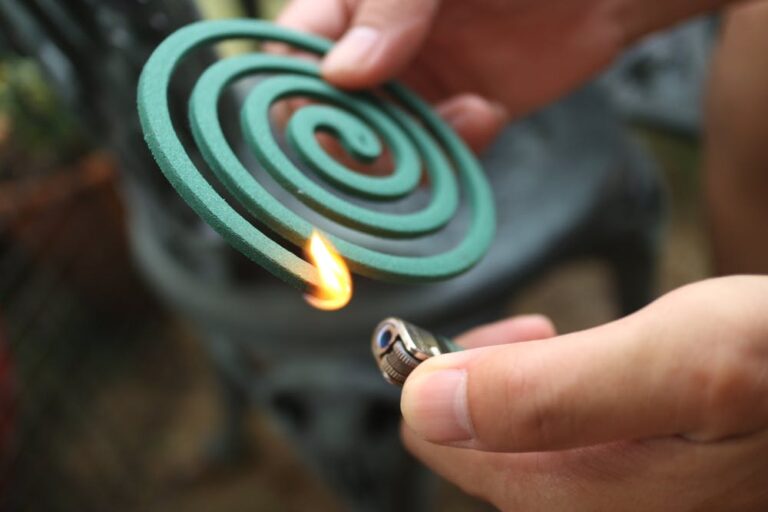Project Report For Mosquito Coil Manufacturing
Introduction
Project report for Mosquito Coil Manufacturing is as follows.
A mosquito coil is a mosquito-repelling incense made of dried pyrethrum powder paste. To allow continual smouldering, the coil is often kept at the centre of the spiral, dangling in the air, or jammed between two pieces of fireproof netting. Normally, burning starts at the outside of the spiral and travels slowly into the core, producing a mosquito-repellent smoke.A normal mosquito coil has a diameter of 15 centimetres (6 in) and a lifespan of seven to twelve hours. In Asia, Africa, South America, Canada, Mexico, and Australia, mosquito coils are widely used.
Project Report Sample Of
Mosquito Coil Manufacturing
Get Completely Custom Bankable Project Report
The coil is frequently kept in the spiral’s core, suspended in the air, or wedged between two pieces of fireproof netting to allow for continual burning. The burning normally begins at the spiral’s the outside end and advances gently into the centre, releasing mosquito-repellent smoke.
Insecticides are used to kill or control insects that are dangerous to humans. “Repellent” insecticides are those that are used to keep insects at bay. Mosquitoes are one of the most dangerous insects to humans. Many pesticides, soaps, oils, powders, repellents, and other preparations are available on the market in various recipes to kill them.
Mosquito repellent is the most popular of them since it possesses germicidal and disinfecting characteristics, as well as the ability to repel mosquitoes and is easy to apply. Mosquito coils are used to repel and destroy domestic insects such as mosquitoes, flies, and garden bugs. Mosquitoes frequently die in its presence due to the pyrethrin found in them.

Advantages of Mosquito Coil Manufacturing
Cost-effective: Mosquito coils are relatively inexpensive to produce, making them a cost-effective option for consumers in many parts of the world.
Effective: Mosquito coils are highly effective at repelling mosquitoes, making them a popular choice for people living in areas with high mosquito populations.
Easy to use: Mosquito coils are very easy to use. They can be lit and placed in a room or outdoor area, and they will provide protection against mosquitoes for several hours.
Long shelf life: Mosquito coils have a long shelf life, meaning that they can be stored for extended periods without losing their effectiveness.
Disadvantages of Mosquito Coil Manufacturing:
Health risks: Mosquito coils release smoke and chemicals into the air, which can be harmful to human health, especially when used in poorly ventilated areas. This can cause respiratory problems, allergies, and other health issues.
Environmental impact: The production and use of mosquito coils can have a negative impact on the environment. The chemicals used in the coils can pollute the air and water, and the production process can generate large amounts of waste.
Fire hazard: Mosquito coils can be a fire hazard if not used properly. They should never be left unattended, and they should be kept away from flammable materials.
Limited effectiveness: Mosquito coils are effective at repelling mosquitoes, but they are not foolproof. They may not work in all situations, and they may not be effective against all types of mosquitoes.
Competition: The mosquito repellent market is highly competitive, with many different products available. This can make it difficult for mosquito coil manufacturers to compete with other companies and maintain profitability.
Market Potential Of Mosquito Coil Manufacturing
The global mosquito coil market was valued at USD 2.1 billion in 2020 and is predicted to reach USD 2.8 billion by 2026, rising at a CAGR of 4.5% from 2021 to 2026.
Expenses

Product Cost Breakup

Reveneue Vs Expenses

Market Trend

In India’s FMCG industry, the mosquito Coil market is one of the fastest-growing and most vibrant. As people become more conscious of vector-borne diseases, demand for mosquito repellent goods such as coils, strips, liquid vaporizers, and other similar items is increasing, giving the Indian insect repellent market a boost.
By 2021, the Indian mosquito repellent industry is expected to reach $ 800 million. The market is predicted to increase as disposable incomes rise, consumer awareness grows, and insect repellents become more readily available thanks to a well-developed distribution network. Furthermore, during the next five years, an increase in literacy rates is predicted to fuel demand for insect repellents.
In 2015, the Western region led the market with a value share of 30% and is expected to continue to do so through 2022. Due to high levels of literacy and awareness among consumers, as well as the development of a robust and coordinated retail network that enables easy availability of a wide selection of insect repellents, the area is likely to maintain its market dominance. “Over the next five years, rising consumer awareness, a growing number of government initiatives, rising consumer spending on health expenditures, and rising demand for consumer-friendly, non-toxic products like mosquito repelling clothes and perfumes are expected to drive demand for mosquito repellents in India.”
The worldwide mosquito repellent market is predicted to develop significantly in the near future, owing to an increase in the frequency of mosquito-borne illnesses and global warming, which enhances mosquito reproduction. Rising health awareness, government measures for mosquito control, and the low cost of repellents are all driving the industry.
Product type, distribution channel, and region have all been used to segment the global mosquito repellent market. The market is divided into spray, coil, cream & oil, mat, vaporizer, and other goods based on product type.
Because of its widespread use by medium groups throughout various developing and rural parts of the world, the coil segment leads the worldwide market in terms of revenue. Due to the increased availability of herbal components, cream and oil are becoming the most popular sector.

